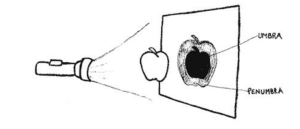What are Shadows? How are They Formed?

Shadows are formed by the blockage of light by an opaque object.
The light rays emitted from a source cannot pass through the solid surface, making a shadow on the ground.
The shadow’s shape and size are dependent on the position of the light from the solid object.
The shadow formed is very much darker than its surroundings.
Formation of Shadows
Light Source: Light is the key component in the formation of shadows. The light position, its intensity, and distance from an object decide the kind of shadow that will be formed.
Opaque Object: The object must be opaque, meaning it does not allow light to pass through it. This ensures that the light is blocked, creating a shadow.
Screen: The shadow falls upon a surface right behind the object. The shadow’s shape and size are dependent on the position of the light from the solid object.
Characteristics of Shadows
Shape and Size: The shape and size of the shadow of the same object might vary depending on the position of the light source.
Darkness: The shadow formed is very much darker than its surroundings.
Misleading: The formed shadow of an object can often be misleading. For example, an ice cream cone can form a triangle.
Types of Shadows
Umbra: The darkest part of a shadow, where no light directly falls from the source.
Penumbra: The region where only a part of the light is obscured, making it partially illuminated.
Antumbra: The region where the body that is blocking the light source appears entirely within that same source of light.
Observations
Shadow Patterns: Shadows are seen forming because of the sun and the light emitted from it. The position of the sun changes throughout the day, and thus the shadow length and size also change for everything on this planet.
Shadow Blister Effect: When two penumbras overlap with each other, the shadows start to merge, creating a blurred effect.
Diffusion of Light: Shadows become increasingly softer and lose their outlines when light is diffused.
